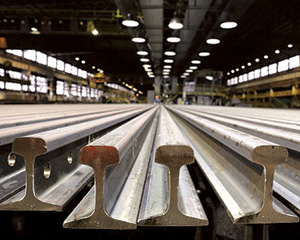 Leonid Sosnovsky, Professor at the Belarusian Transport University, is one of the scientists responsible for the invention. He describes the technical characteristics of the new material as somewhere between steel and cast iron. Its name comes from the initial letters of three chemical elements: molybdenum, nickel and cuprum. These metals, used in particular proportions added to the process of casting iron, add special properties to the material: making a product that has the durability of steel and the high technological and servicing features of extra strong cast iron.
Leonid Sosnovsky, Professor at the Belarusian Transport University, is one of the scientists responsible for the invention. He describes the technical characteristics of the new material as somewhere between steel and cast iron. Its name comes from the initial letters of three chemical elements: molybdenum, nickel and cuprum. These metals, used in particular proportions added to the process of casting iron, add special properties to the material: making a product that has the durability of steel and the high technological and servicing features of extra strong cast iron.
For the last 100 years, all railway lines have been made of steel which wears over the course of time. Huge amounts of money are spent annually on their repair: 1km of steel single-cut rails costs $65,000. Scientists confirm that a rail made of Monicu will cost half as much. Casting is simple and cheaper in comparison to traditional rails, consuming half the energy of steel production.
Four experimental Monicu rails have been made and have performed successfully in tests along the Gomel branch line for the last 16 months (in all seasons). The rails have been analysed and the results show that their durability is almost the same as of steel rails. The Belarusian invention was discussed at a session of chief engineers of the Eurasian Economic Union’s railway administration, held recently in Gomel. Specialists supported the project, recommending further testing to ensure the product’s safety. At present, a Belarusian-Russian meeting is being prepared to develop a plan of cast rail production.
By Vasily Veremeev












